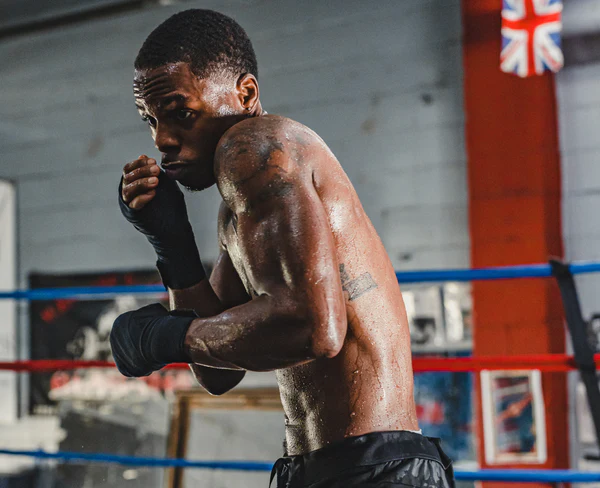Boxing Techniques: Mastering the Art of Precision and Power

At the heart of any successful boxer lies the mastery of core Boxing Techniques. A strong foundation begins with the stance, which serves as the base for all movements and punches. The stance is critical as it dictates balance, mobility, and defensive capabilities. Boxers typically choose between an orthodox or southpaw stance, depending on their dominant hand. Maintaining a stable yet agile stance allows for fluid transitions between offensive and defensive maneuvers.
Equally important is footwork, which enables a boxer to control distance, evade punches, and position themselves for attacks. Proper footwork not only provides the stability needed to deliver powerful blows but also allows the boxer to maneuver around their opponent. The ability to pivot, shuffle, and quickly adjust one’s position is integral to staying one step ahead in the ring.
The Art of Punching: Power and Precision
When discussing Boxing Techniques, the importance of effective punching cannot be overstated. Boxers employ a variety of punches, each with its own purpose and application. The jab, cross, uppercut, and hook are the building blocks of offensive strategy, each requiring distinct skills and precision. The jab, often considered the most important punch, serves to gauge distance, set up other punches, and disrupt the opponent’s rhythm.
A cross, thrown with the rear hand, is a powerful tool for damaging an opponent and establishing dominance. Meanwhile, the uppercut is used to target the opponent’s chin, making it a devastating punch when executed correctly. The hook, delivered with a sweeping motion, targets the side of the opponent’s head or body, often setting up opportunities for other strikes. Mastery of these punches, with an emphasis on both power and precision, is crucial for success in the ring.
Defensive Skills: Blocking and Dodging
In addition to offensive Boxing Techniques, defensive skills are essential for a well-rounded boxer. Defense is not simply about avoiding punches; it involves a series of strategic movements and techniques designed to minimize damage while positioning oneself for a counterattack. One of the most fundamental defensive maneuvers is blocking, where a boxer uses their gloves, arms, and shoulders to absorb or deflect punches.
Head movement is another vital aspect of defense. Slipping, bobbing, and weaving are techniques used to evade punches, allowing the boxer to avoid contact while remaining in position to strike back. The key to effective defense lies in timing and anticipation; the ability to read an opponent’s movements and respond quickly is a hallmark of an elite boxer.
Timing and Distance Management
Boxing Techniques also rely heavily on the boxer’s ability to manage timing and distance. Timing is often the difference between landing a punch and being hit. A boxer must develop a keen sense of when to strike, when to block, and when to evade. Timing can be influenced by the boxer’s ability to read their opponent’s movements and predict their next action, making it essential to remain calm and composed.
Equally important is distance management. A boxer must be able to control the range of engagement, maintaining a safe distance to avoid incoming punches while positioning themselves within striking range. Effective use of footwork and head movement allows for optimal control of the distance, ensuring that the boxer remains in the best possible position to land clean, powerful punches.
Conditioning and Mental Toughness
Beyond Boxing Techniques, the physical and mental conditioning of a boxer plays a crucial role in their success. Boxing is an intense sport that demands both cardiovascular endurance and muscular strength. Fighters spend hours training to build stamina, power, and agility, ensuring they can maintain peak performance throughout the duration of a match.
Mental toughness is equally important. A boxer must be able to remain focused and composed, even when under pressure. The ability to persevere through adversity, adapt to changing circumstances, and recover from setbacks is essential for success. Mental fortitude allows a boxer to push through exhaustion, maintain clarity in decision-making, and stay committed to their strategy.
Combining Offense and Defense: The Sweet Science
The true mastery of Boxing Techniques comes when offense and defense are seamlessly integrated into a fluid, dynamic fighting style. A skilled boxer knows how to balance aggression with caution, attacking with precision while remaining defensively sound. This requires an acute awareness of both the opponent’s actions and one’s own strengths and weaknesses.
Advanced boxers are able to feint—using deceptive movements to mislead their opponent into reacting, creating openings for effective attacks. The use of counterpunching, where a boxer strikes immediately after evading or blocking an opponent’s punch, is another advanced technique that requires impeccable timing and skill. The synthesis of these techniques creates a boxing style that is both unpredictable and lethal.
The Role of Strategy: Adapting to the Opponent
Another crucial aspect of Boxing Techniques is the ability to adapt to different opponents. Every fighter brings a unique set of skills, tendencies, and strategies to the ring. A successful boxer must be able to assess their opponent’s strengths and weaknesses early in the match, adjusting their approach accordingly. Some boxers may favor brawling, relying on power punches, while others may prefer a more technical approach, focusing on footwork and precision strikes.
A boxer’s ability to adapt their strategy based on the opponent’s style can often determine the outcome of a fight. This adaptability is honed through experience and careful observation, making it a key element in the arsenal of any skilled fighter.
In conclusion, Boxing Techniques are a blend of precision, power, and strategy that require years of training, discipline, and mental resilience. Mastering these techniques involves a combination of offensive punches, defensive movements, timing, distance management, and psychological fortitude. Whether in a competitive match or during a sparring session, a boxer’s success hinges on their ability to integrate these elements into a cohesive and effective fighting style. Mastery of boxing goes beyond the physical act of punching—it’s about understanding the art of control, reaction, and adaptability in the ring.


